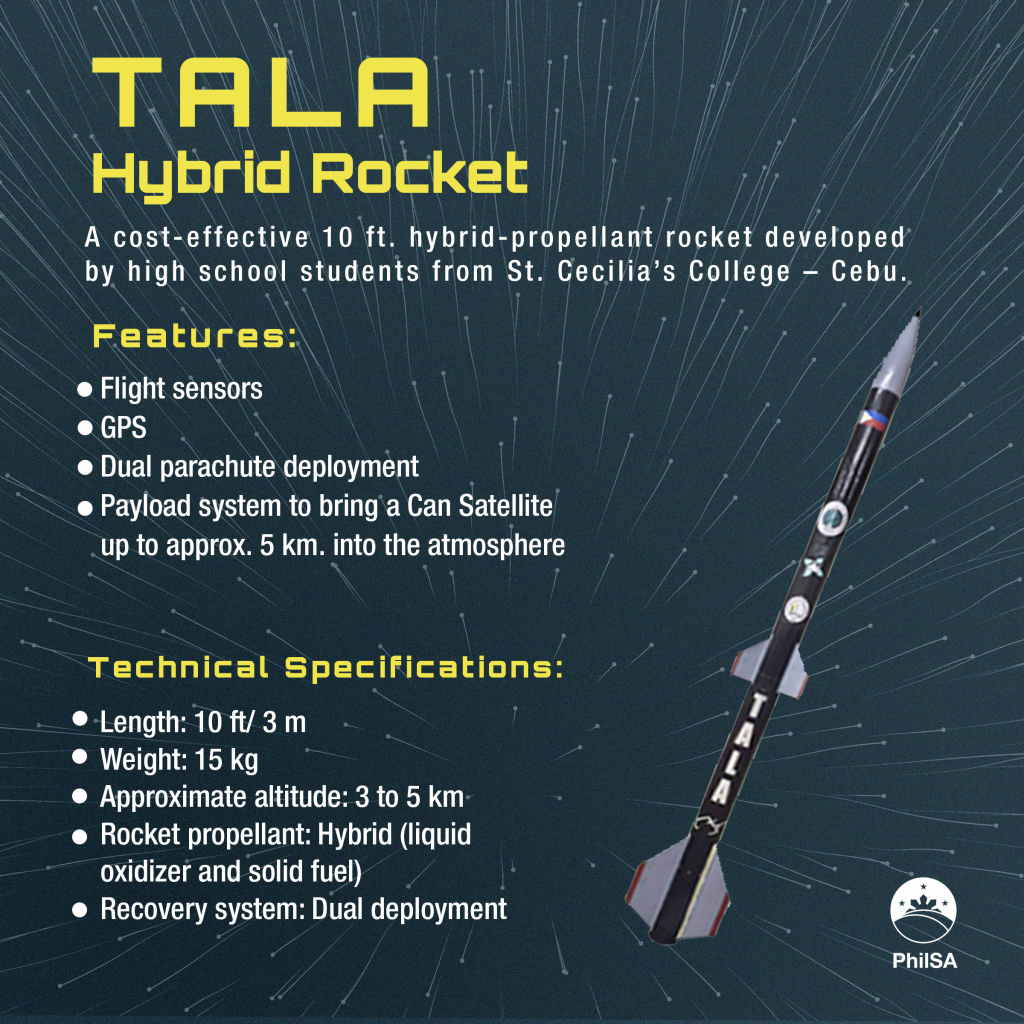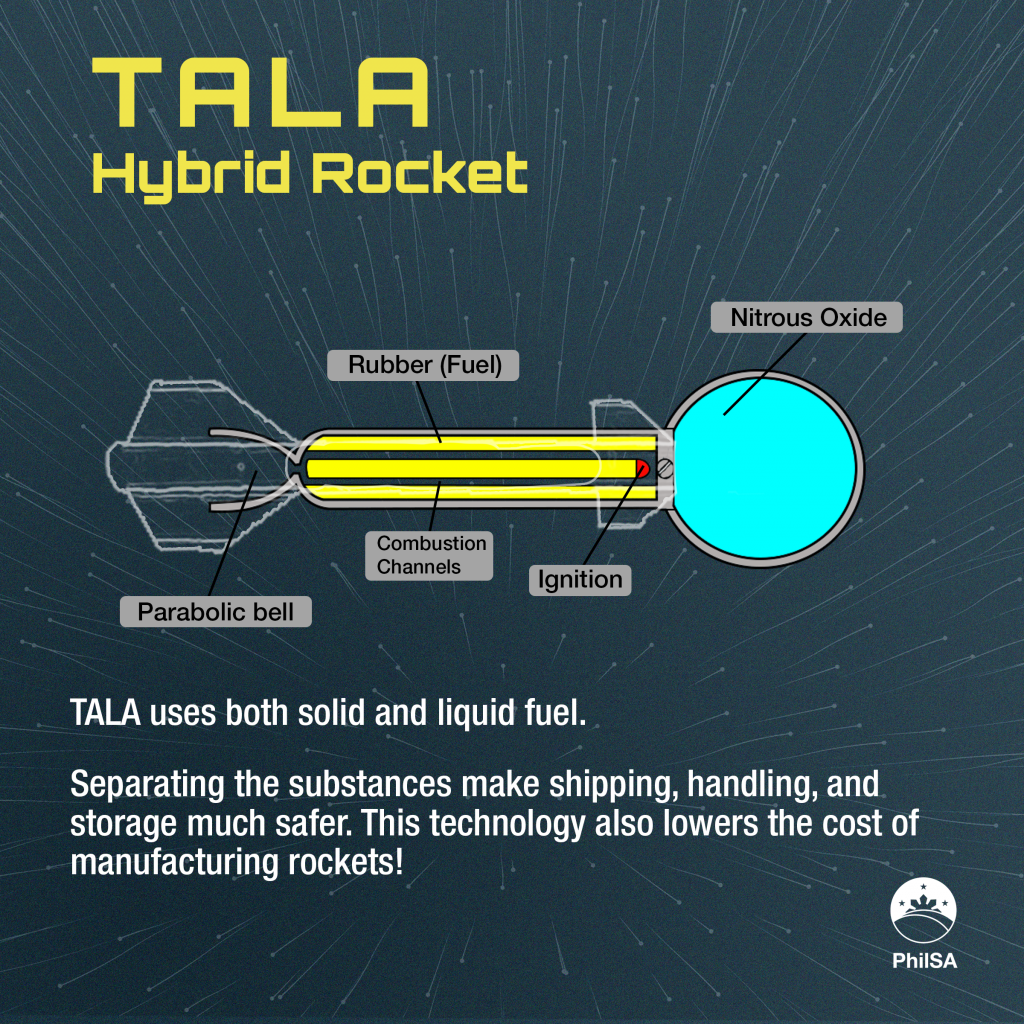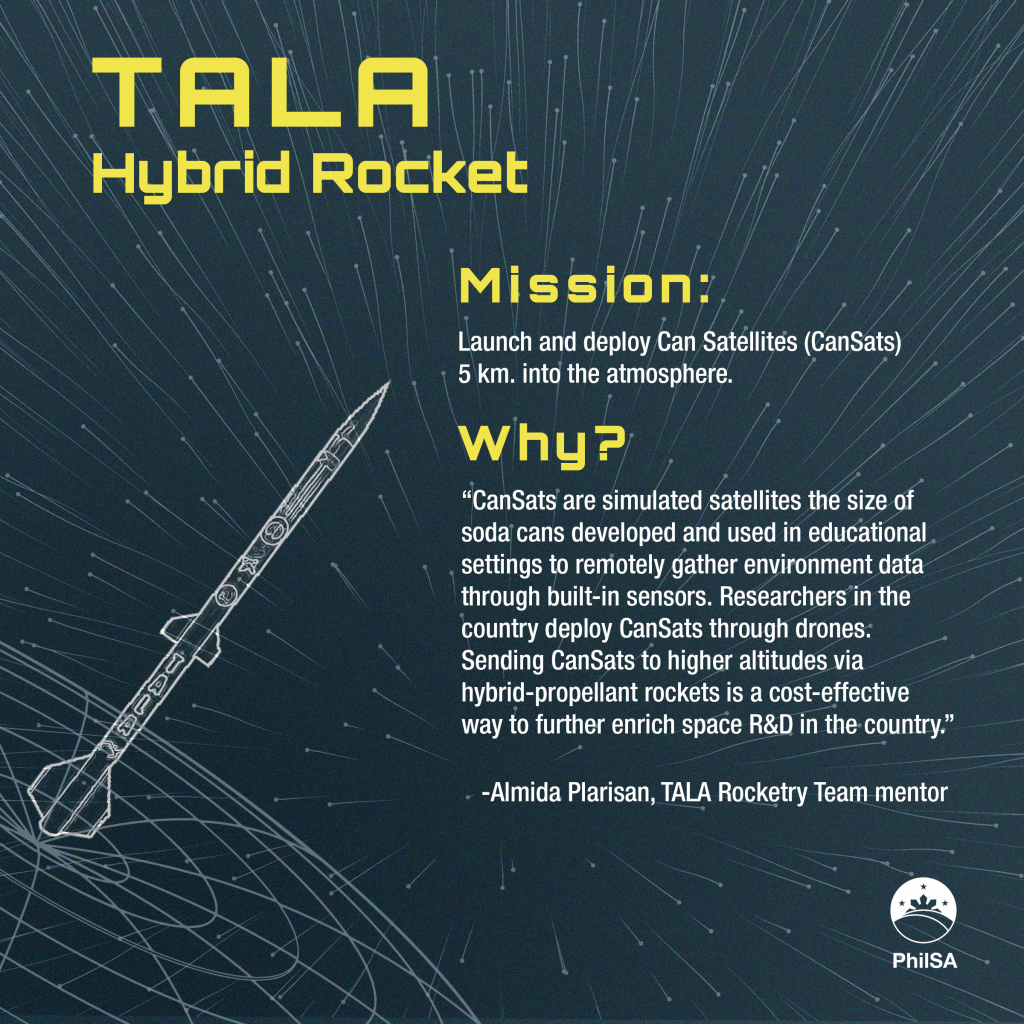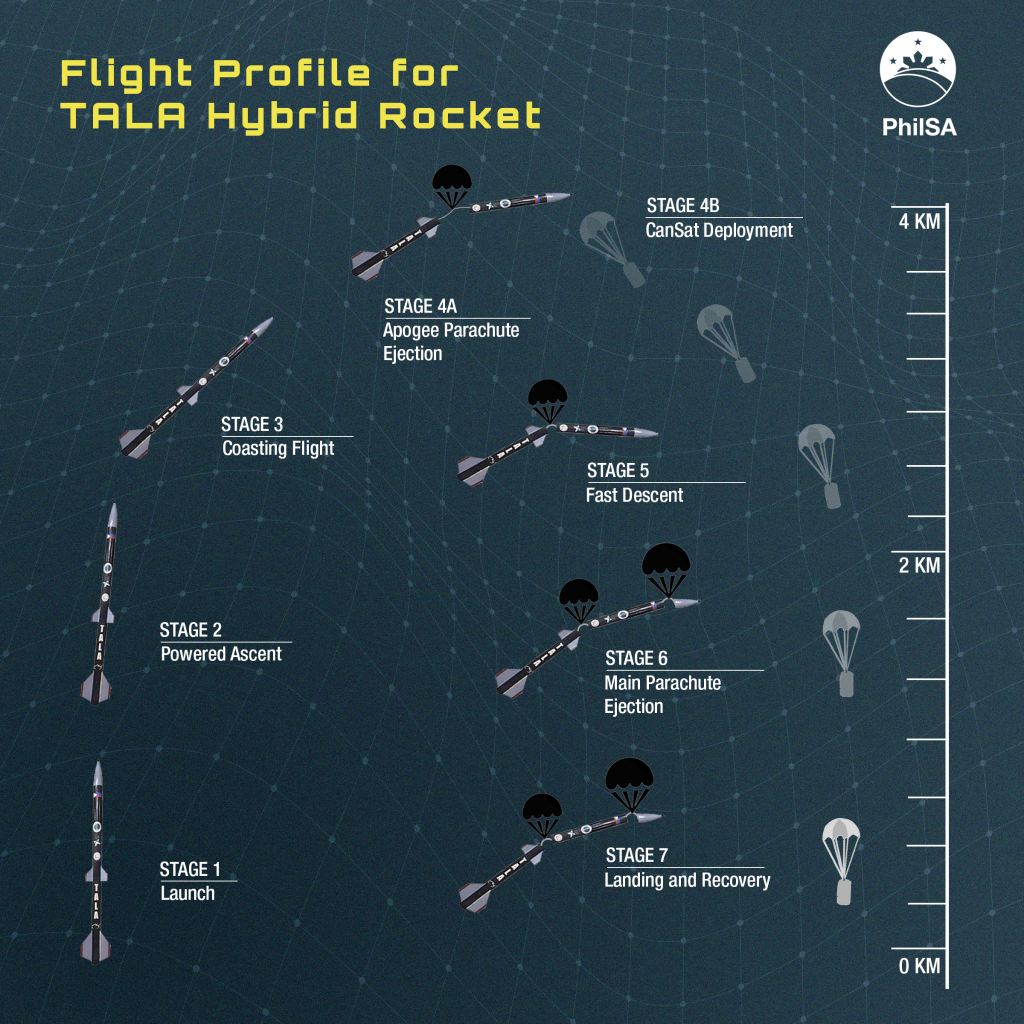The Philippine Space Agency (PhilSA) is set to visit schools in Tarlac for a series of talks on space education, space research and development, and careers in space science and technology applications (SSTA). The visits will culminate in a water rocket activity for students. The schools tour is made possible in partnership with the Department of Education Region 3 and the Tarlac Provincial Science and Technology Office, and has the following schedule:
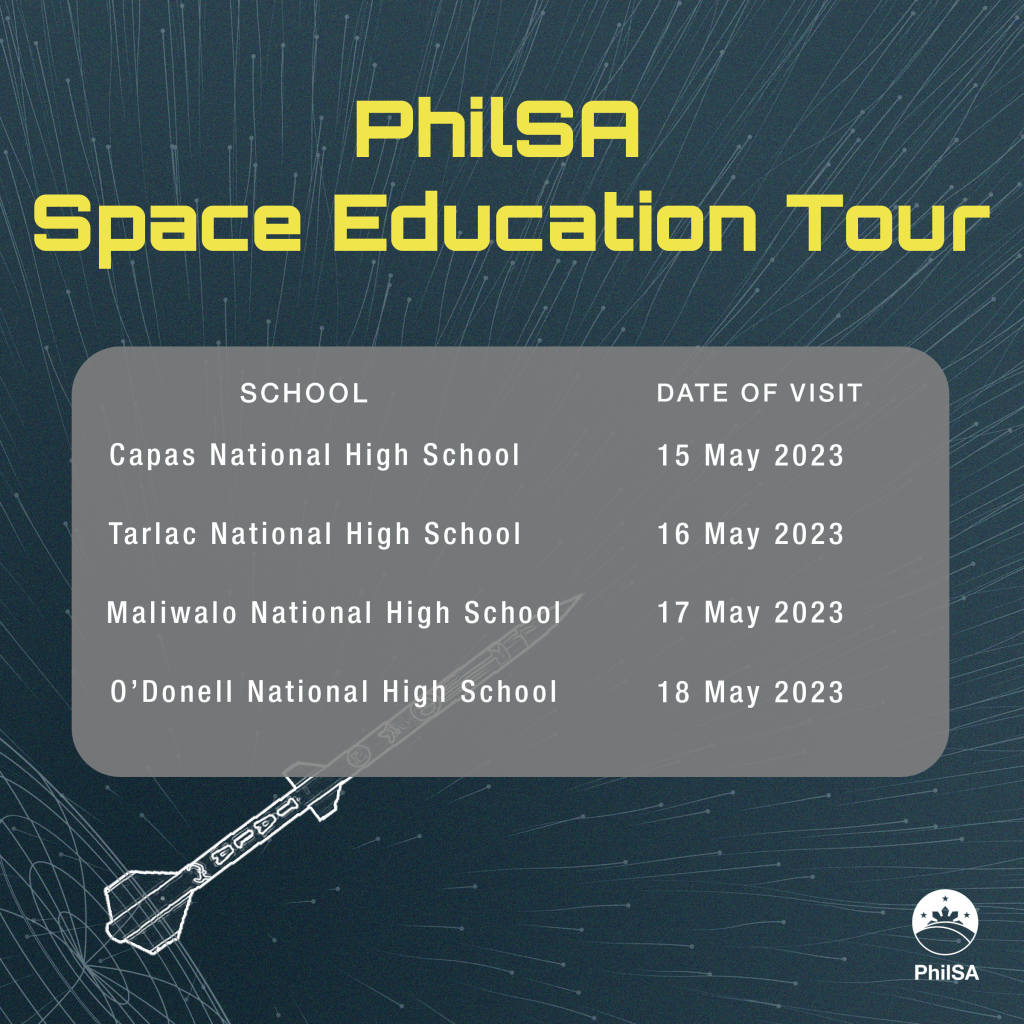
Simultaneous with the schools tour, a Space Technology Applications Exhibit will be held in Tarlac State University Main Campus from 16 to 18 May. The exhibit, developed by the Philippine Foundation for Science and Technology (PFST) with the support of the Department of Science and Technology Philippine Council for Industry, Energy, and Emerging Technology Research and Development (DOST-PCIEERD), features replicas of Philippine microsatellites and space technology applications by Filipino scientists. The exhibit will also feature a mobile planetarium.
TALA rocket launch also set in Tarlac
Scientists and engineers from PhilSA will be joined by members of the TALA Rocketry Team in the schools tour and exhibit program to tell students the story of the TALA Hybrid Rocket – the first high-power hybrid rocket developed in the Philippines by homegrown space technology researchers, students, and their mentors from St. Cecilia’s College-Cebu. The hybrid rocket is set for launch between 19 and 21 May in Crow Valley, Capas, Tarlac.
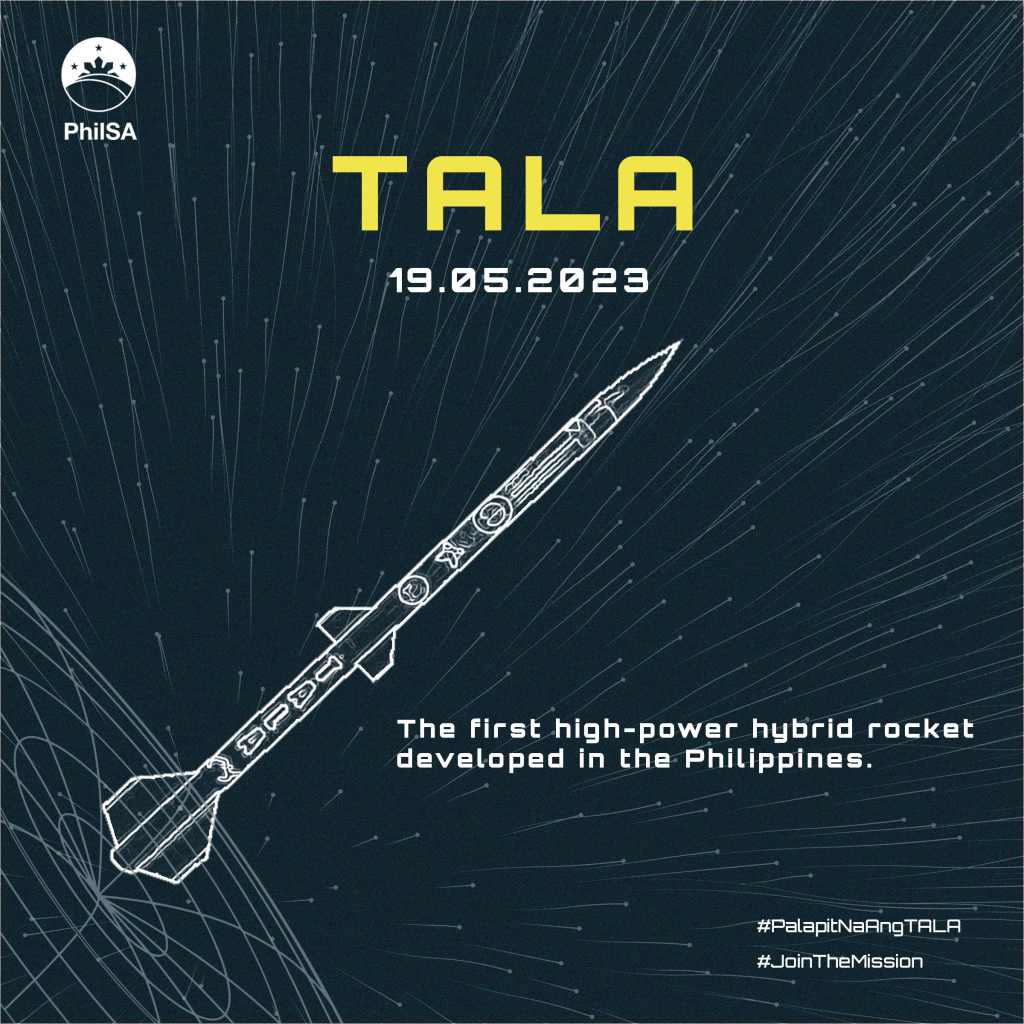
The rocket, measuring 10 feet in height and weighing 15 kilograms, was created in 2018 using 3D-printed advanced composite materials, under the Young Innovators Program of the DOST-PCIEERD.
TALA was supposed to be launched in March 2020 from Mati City Airport, Davao Oriental but had to be postponed indefinitely due to the pandemic. Since early 2022, PhilSA and the TALA team, in collaboration with the Philippine Air Force through the Philippine Air Force Research and Development Center, have been jointly working on efforts to refuel the launch of TALA.
Among the features of the TALA rocket are flight sensors, a GPS, a dual parachute deployment, and a payload system to bring a Can Satellite (CanSat) up to approximately 5 kilometers into the atmosphere. According to the TALA team, sending CanSats into the atmosphere using hybrid rockets is more effective than deploying these simulated satellites using drones, since hybrid rockets can deploy to higher altitudes. CanSats are used in educational settings to remotely gather environment data.
About TALA
